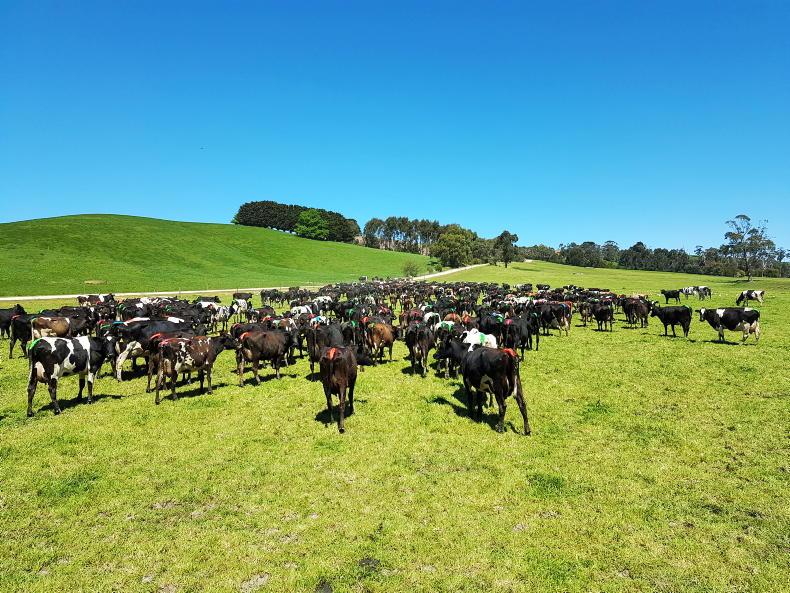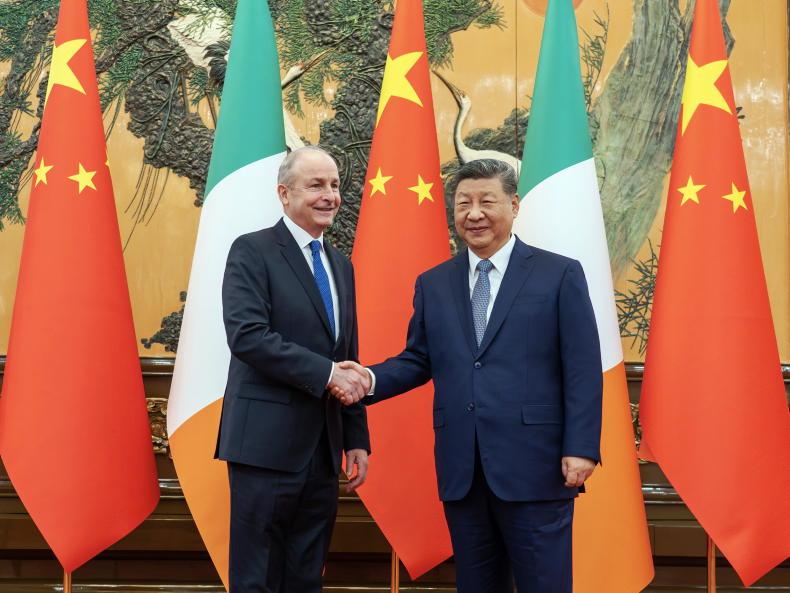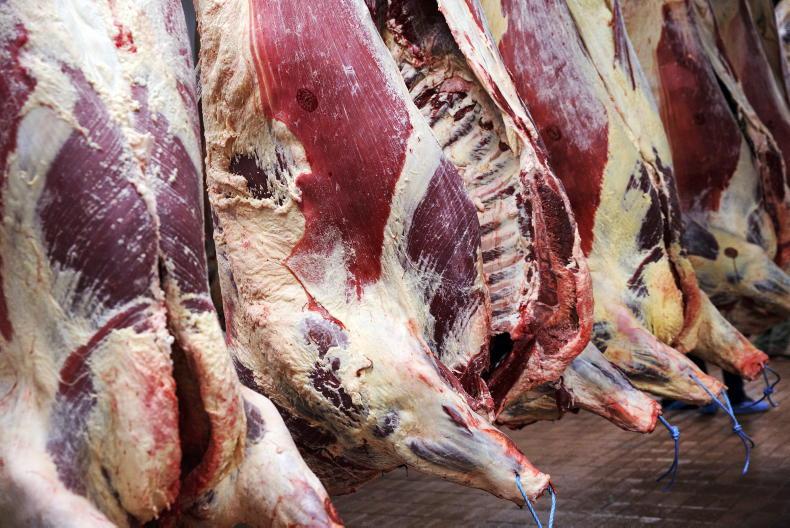US beef finishers are riding the crest of a wave at present, getting the equivalent of €5.60/kg average for beef carcases that are killing out at over 60%, since the dressing specification doesn’t trim cattle as tight as Ireland and the EU does.
Farmers are in the driving seat at present, as cattle numbers are scarce. Drought in many cattle regions throughout 2022 meant a higher-than-usual cow cull, and the United States Department of Agriculture (USDA) are forecasting a drop in cattle numbers for slaughter of 4% in 2023.
Factories have not been able to pass these high prices on to customers in either the domestic or export markets.
Looking at US Meat Exporters Federation (USMEF) data for the first quarter of 2023, we can see that while volume of product exported is down 8% to 326,494 tonnes (t), the value is down 22% to $2.353bn (€2.14bn).
This is reflected in the performance of the factories. Tyson Foods, the second largest beef processor in the US, indicated this week (halfway through their financial year) that they anticipate an operating margin between -1% and 1% for their beef division.
For the first half of the year to the end of March, their operating income on beef plummeted from a huge $1.594bn (€1.449bn) to $166m (€151m); that’s 15.9% to 1.8%.
Brazil
US farm gate prices are being held up by tight supply rather than the markets, plus factories have a considerable war chest following exceptional profits in 2021 and early 2022.
Beef finishers in Brazil haven’t been so fortunate, as weaker global beef prices have been passed back to suppliers by the factories.
Brazil’s farm gate price, according to Bord Bia figures, is currently the equivalent of €3.06/kg, down 21% from this time last year when the equivalent of €3.90/kg was being paid.
Brazil is the world’s largest beef exporter at over 2m tonnes in 2022 and this drop in farm gate cattle value broadly reflects the drop in value of exports over the past year.
For April 2023, data from ABIEC (Brazil’s meat exporters organisation) shows a drop in the value of beef exports to $4,640 (€4,218)/t – a 25% fall from $6,160 (€5,600)/t in May 2022.
In their April forecast, USDA predicted a 2% increase in Brazil’s beef output this year, so factories have been able to pass on lower international market values for beef to their suppliers.
Australia
Australia is the third largest beef exporter in the world after Brazil and the US, typically exporting 1m tonnes annually, though this dipped to below 855,000t in 2022 (Meat and Livestock Australia MLA).
This was the lowest since 2003 and was caused by a herd rebuilding programme following prolonged drought, and farm gate cattle prices have also fallen as the supply has increased in late 2022 and throughout the first quarter of 2023.
This time last year, MLA reported the value of prime steers at AUD7.13/kg, the equivalent of €4.37/kg. By the week ending 5 May this year, this has fallen to AUD5.67/kg, which is the equivalent of €3.46/kg, reflecting the fact that Australia has become a buyers’ market again, even with an increase in exports to China and the US and the UK market opening up at the end of this month.
The other big concern in Australia is a scarcity of factory labour, which may restrict slaughtering capacity in some areas.
Irish beef finishers have long observed that when cattle are scarce and factories are chasing, prices increase; the opposite happens whenever numbers are plentiful.
Irish beef export values are made in the UK and mainland Europe, so the value of beef in global export markets has negligible effect. That could change if Irish exports to China increase as expected and without further disruption.
It has the potential to become a market for 30,000t of Irish beef quite quickly, but with markets in the EU and UK strong over recent months, Irish exporters in Asian markets have declined.
With volumes from Brazil and Australia increasing in 2023, offsetting any drop in US beef exports, any increase in value will depend on demand continuing to increase in China.
If it does, that will discourage South American exporters from increasing sales to Europe, and Ireland will be well-placed to pick up a share.
If, however, demand from China cools, global beef markets will be very well-supplied, putting pressure on values.
For more, see Adam Woods' article on Irish beef prices v those in Europe.










SHARING OPTIONS